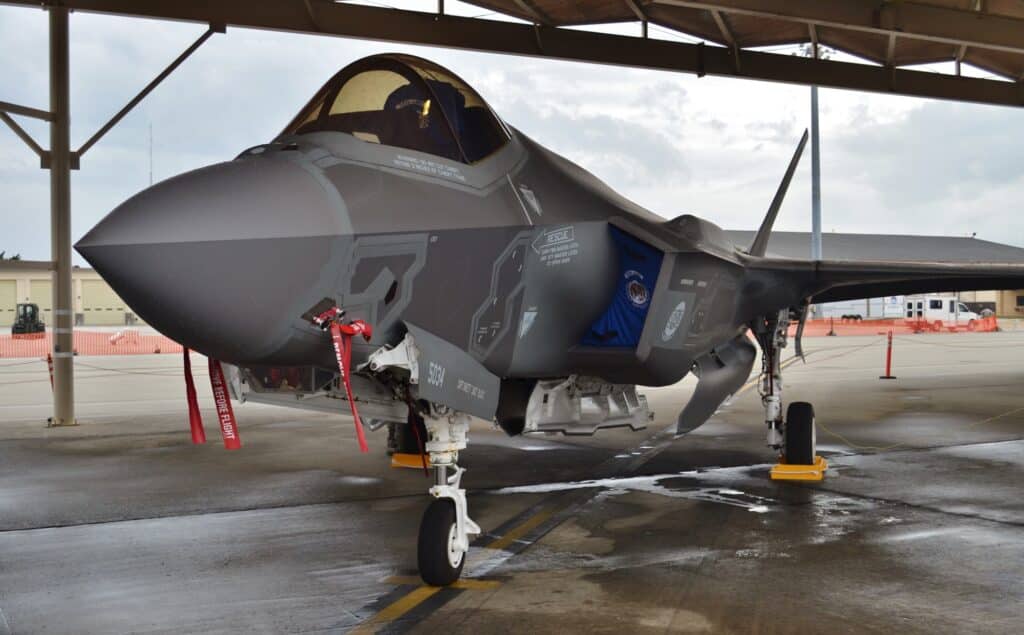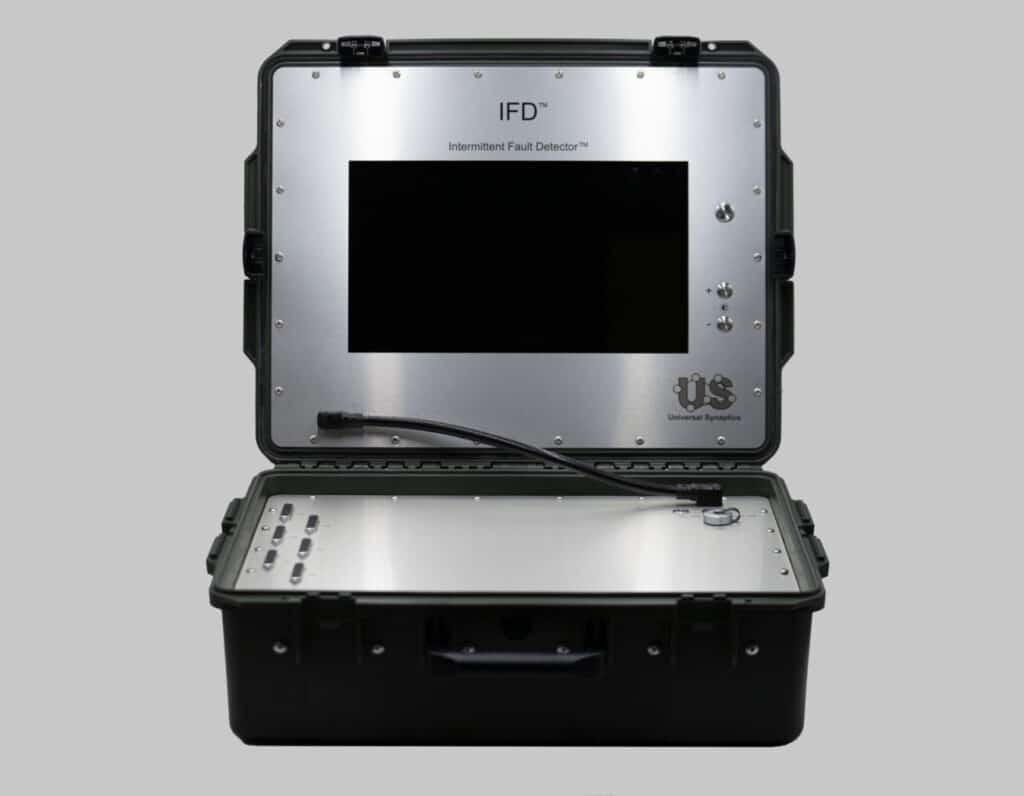
F-35, the ACE concept linchpin, suffers immensely from intermittence, degrading Air Force combat capability
Agile Combat Employment & the Intermittence Problem
In the Agile Combat Employment concept, time is the “coin of the realm”. With a moment’s notice, combat capability must be in the air for plan execution. There is no time for extensive troubleshooting nor are there numerous spare aircraft to achieve mission success. All efforts must focus on expeditiously generating and delivering combat capability at a time of the DoD’s choosing. Unfortunately, intermittent faults’ budgetary drain and diminished capability effects will prevent successful ACE execution and must be addressed before the ACE concept becomes a viable solution. Before looking at intermittence, we need to review the ACE concept.
ACE is rapid, expeditious, light, lean, and lethal by design. The concept relies on multi-capable maintainers being able to sustain and generate aircraft. Air Force Doctrine Note 1-21 states, “ACE shifts operations from centralized physical infrastructures to a network of smaller, dispersed locations that can complicate adversary planning and provide more options for joint force commanders. Its value is derived from the ability to hold adversary targets at risk from multiple locations that are defensible, sustainable, and relocatable. Airmen should expect to conduct operations at a speed, scope, complexity, and scale exceeding recent campaigns from distributed locations.” ACE employment execution works well in an exercise or academic planning environment; however, when executed in an operational environment with a peer competitor, intermittence will cause ACE to fail.
Intermittence is the antithesis to a successful ACE concept. Where ACE execution relies on as many known knowns as possible, intermittence is a major unknown. Intermittence is a random signal disruption in time, place, amplitude, and duration, created through prevailing operating environments, such as temperature, vibration, and G-loading. A 50-nanosecond lapse of electrical connectivity can lock up radars, cause GPS malfunctions, and ground critical missions. The interconnection materials (solder, copper, aluminum) become very malleable under extreme heat while also becoming very rigid and stiff under extreme cold. The repeated sequence of takeoff and landing creates extreme pressure and temperature differentials. Cycling between the ground and 40K feet and a temperature range between 130 to -70 degrees Fahrenheit creates microscopic fractures in the interconnecting material also known as material fatigue before hard failure. These micro fractures permeate through the line replaceable units, wire bundles, and connectors causing degraded mission success or even mission failure.
Upon landing, the elusive problems, glitches, or “gremlins” appear and disappear under certain conditions and flight profiles, the majority of which cannot be duplicated on the ground and result in a No Fault Found (NFF) or Can Not Duplicate (CND) repair action. Moreover, troubleshooting, and swapping electronics to find the problem (“Swaptronics”) not only fail to resolve the issue but can sometimes induce or exacerbate problems on the aircraft preventing a root-cause solution. The problem is pervasive throughout the DoD and Air Force aircraft are not immune.
Intermittent faults drain our weapon systems of much needed readiness annually, costing the DoD an alarming $5.5B and 383K days of end item non-availability annually (figures recently reported by the Office of the Secretary of Defense). Undetected and hence unrepaired intermittent faults result in No Fault Found (NFF) test results and unnecessarily consume 47% of the DoD’s avionics maintenance budget. The cost and non-availability days continue to grow exponentially because even though weapon systems have accomplished more technological advancements in the last decade than in the previous five, weapon system test equipment continues to be stagnant. Without an innovative proven solution, undetected intermittent faults will consume 100% of the DoD’s $12B annual electronics maintenance budget by 2030. Fortunately, a solution exists today.
Intermittent Fault Detection (IFD) Technology Facilitates Agile Combat Employment (ACE)
Universal Synaptics Corporation (USC) has the only objectively proven solution for the intermittent problems plaguing today’s combat readiness and destined to plague the ACE concept. USC is the undisputed global leader in intermittent fault detection, with capability proven to fill the digital testing void existing in the DoD’s test equipment inventory. Currently the DoD owns and maintains 400 different types of test systems valued at an astounding $50B; none reduce the long standing intermittent / No Fault Found problem. USCs interoperable, agnostic, easy to use test capability performs like no other tester on the market today.

The PIFD is purpose built to detect and isolate intermittent faults that cause No Fault Found (NFF) test results
First, the PIFD and IFDIS 2.0 AutoMap™ function identifies the as-wired test point configuration, eliminating manual point-to-point evaluation, and reliance on OEM schematics and data. In addition, the PIFD and IFDIS 2.0 Artificial Intelligence and Machine Learning instantly writes the Test Program Set (TPS) without costly and time-consuming software programming. The PIFD and IFDIS 2.0 deterministic test methodology monitors the Unit Under Test (UUT) wiring simultaneously and continuously and detects, isolates, and reports in real time down to 50ns of signal disruption. The PIFD and IFDIS 2.0 also conduct a standard continuity and shorts test before testing for intermittent faults. Once the intermittent faults are isolated, the maintainer can accurately diagnose and repair the UUT. More important and well-suited for the ACE concept the PIFD and IFDIS 2.0 are agnostic to weapon system and interoperable with the small hub of Low Density, High Demand assets utilized in the ACE concept. In the ACE concept, PIFD and IFDIS 2.0 enable rapid diagnosis and repair preventing downtimes ranging from 30 days to multiple months currently experienced across USAF fleets. The PIFD and IFDIS 2.0 makes troubleshooting an inoperative fuel float valve, Auxiliary Power Unit / Integrated Power Pack, or radar issues quick and definitive. Even with inexperienced maintainers and connectivity challenged areas, the PIFD and IFDIS 2.0 will ensure ACE is a success.
In an ACE concept, maintenance personnel experience and connectivity will be in short supply. The PIFD and IFDIS 2.0 ease of use and automatic report generation helps alleviate the manpower and connectivity strain. The PIFD and IFDIS 2.0 “I-phone” like GUI interface is purpose built for the young sustainment professional elevating the apprentice maintainer’s troubleshooting capability to a seasoned craftsman. Using these patented intermittent diagnostic tools, the least experienced maintainer can connect, run a “continuity”, “shorts” and “intermittent” test and then isolate and repair. After completing the maintenance action, the maintainer can retest, ensuring an intermittent free wire bundle or LRU exists. This “retest” capability acts as an “over the shoulder” or a “second set of eyes” when no other maintainers are available, or the aircraft is in an austere environment.
If network connectivity is an issue, the PIFD and IFDIS 2.0 AutoReport™ function ensures accurate data collection. AutoReport enables the maintainer to conduct maintenance, retest wire bundles and LRUs, and produce a report for each occurrence. The AutoReport documents are automatically stored on the equipment and can be downloaded for Maintenance Information System update upon homestation or Main Operating Base arrival. Benefits of the PIFD and IFDIS 2.0 are numerous and the ones listed above are only a few, but the benefits produced through accurate intermittent fault detection are not just tactical. The GAO reports intermittent technology can have an outcome-altering strategic effect on readiness and the ACE concept.
At the strategic level, the GAO estimates implementing Universal Synaptics’ Intermittent Fault Detection capability will increase aircraft readiness by 50% (GAO report 20-116). Such a significant increase in readiness provides a relief valve on downward budgetary pressure and enables additional aircraft acquisition, aircraft modernization, or capability enhancements.
On the surface, the ACE concept is an elite and exquisite employment concept, light, lean, lethal, and full of agility and complexity to overwhelm the enemy. Unfortunately, current readiness, maintenance technology, and austere environments will quickly expose weaknesses in the ACE concept and degrade or possibly prevent mission objectives. The time is now to employ the PIFD and IFDIS 2.0 across ACE weapons systems to combat intermittence, ensuring lethality, agility, and mission success.
